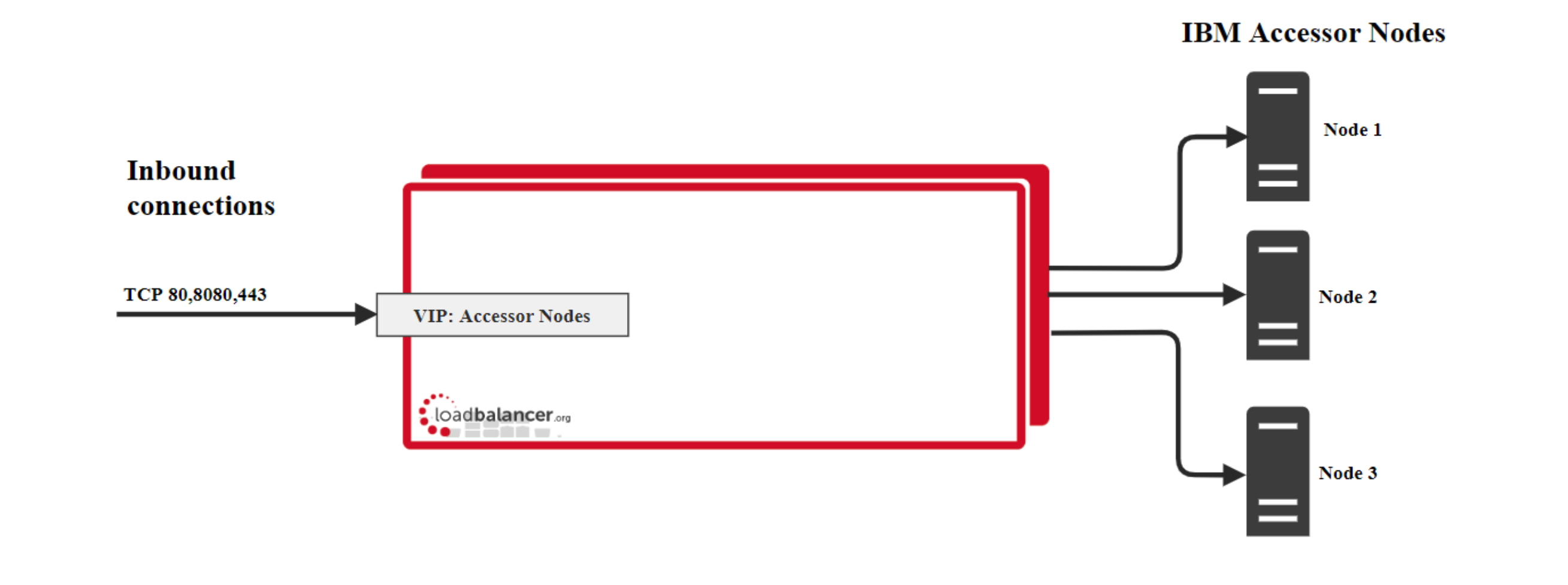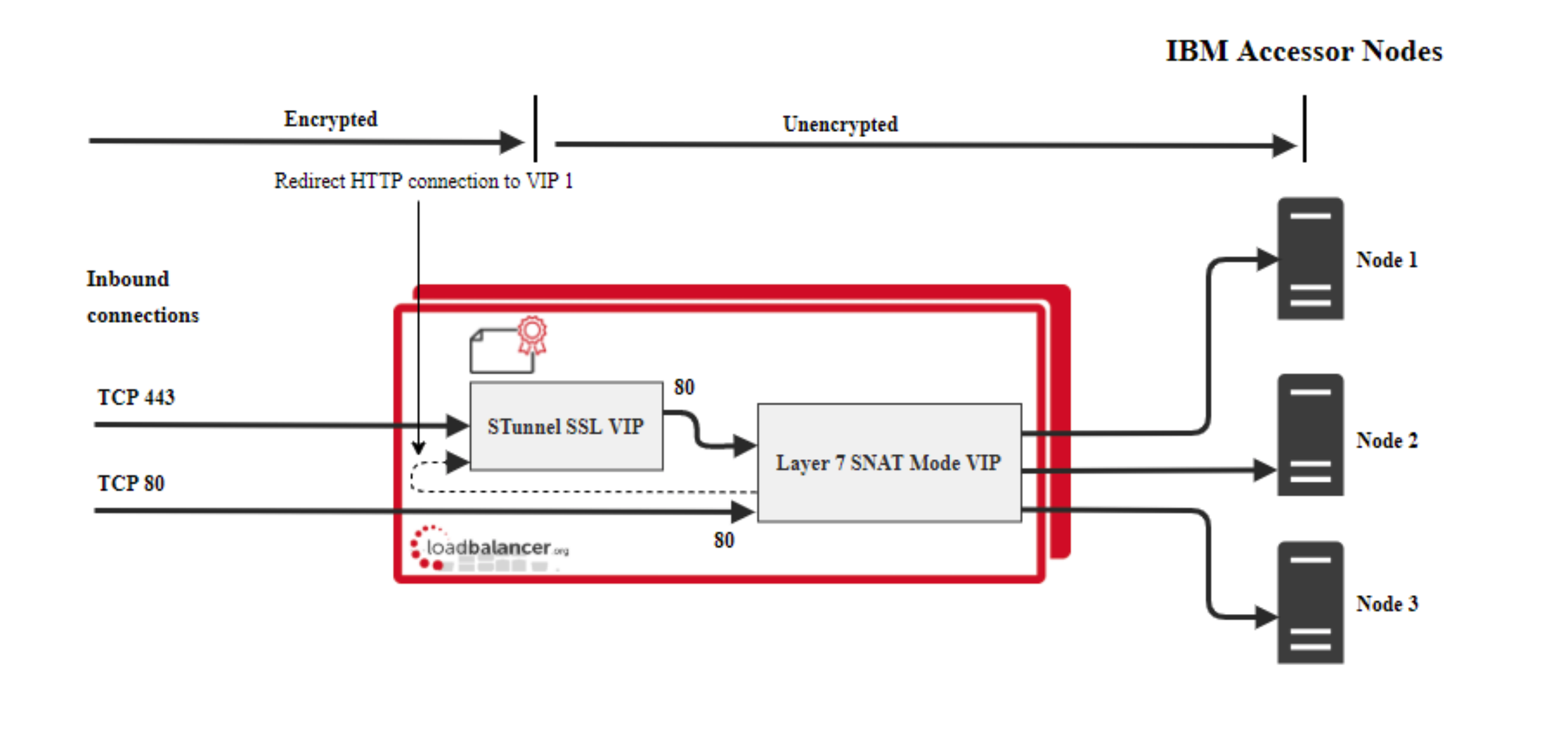Load balancing IBM Cloud Object Storage

Useful resources
About IBM Cloud Object Storage
The IBM Cloud Object Storage system is a breakthrough platform that helps solve petabyte (and beyond) storage challenges for enterprises worldwide. It uses an innovative and cost-effective approach for storing large volumes of unstructured data while still ensuring scalability, security, availability, reliability, manageability, and flexibility.
Key benefits of load balancing
Here are a few key benefits:
- Helps make sure data is highly available and accessible at all times
- Enables businesses to meet growing data demands through scalability
- Load balancers monitor and perform health checks to ensure traffic is routed correctly
How to load balance IBM Cloud Object Storage
A variety of load balancing methods are currently supported by IBM Cloud Object Storage Accessor nodes, dependent on customer infrastructure, including layer 4, layer 7, and geo GSLB / location affinity.
When the IBM Accessor nodes are deployed with the load balancer, clients connect to the Virtual Service (VIP) on the load balancer rather than connecting directly to one of the Accessor nodes.
The VIP can be configured using either Layer 4 or Layer 7, depending on the architecture of the network. In this case we recommend using Layer 7 as no network changes are required and SSL termination can be implemented.
This mode offers high performance and implementation flexibility, however as Layer 7 is a reverse proxy the client source IP address is not visible at the real server: instead, the IP address of the load balancer is visible at the real server. In order to retain the client source IP address, the load balancer inserts an X-Forwarded-For header into the load balanced traffic, which the IBM Accessor nodes can log for troubleshooting issues while seeing the true source IP address of connecting clients.
HTTP and HTTPS (SSL pass-through) load balancing

HTTP and HTTPs (SSL termination) load balancing

The load balancer can be deployed as a single unit, although we recommend a clustered pair for resilience and high availability. Details on configuring a clustered pair can be found on page 24 of our deployment guide, below.
deployment guide

IBM Cloud Object Storage Deployment Guide
Read deployment guidemanual

Administration manual v8
Read manualcase study

Blue Chip scales-out its IBM Cloud Object Storage (COS) system with Loadbalancer.org’s simple, cost-efficient solution
Read case studyblogs

Things to keep in mind while choosing a load balancer for your object storage system
Read blog
NAS vs Object Storage: what's best for unstructured data?
Read blog
How load balancing helps to store and protect petabytes of data
Read blog
Load balancing: The driving force behind successful object storage
Read blogwhite paper

Load balancing: the lifeblood in resilient Object Storage
Read white paper

